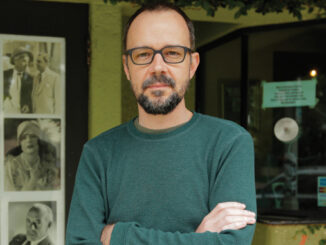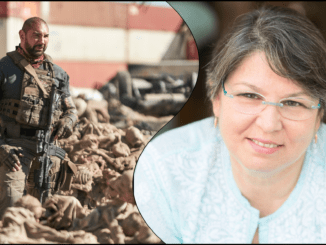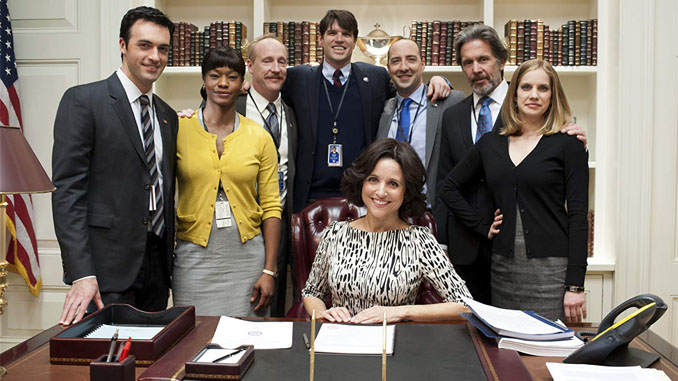
Courtesy of HBO.
by Rob Feld
For picture editors Roger Nygard, ACE, and Matthew Barbato, the current — and final — season of HBO’s Veep offers the opportunity to swim in the middle ground between comedy and drama that resonates with them both. “Veep is the perfect combination of dark humor and surprising moments of emotion,” says Barbato, who fell in love with narrative while watching anything and everything that happened to be on the tube as a child.
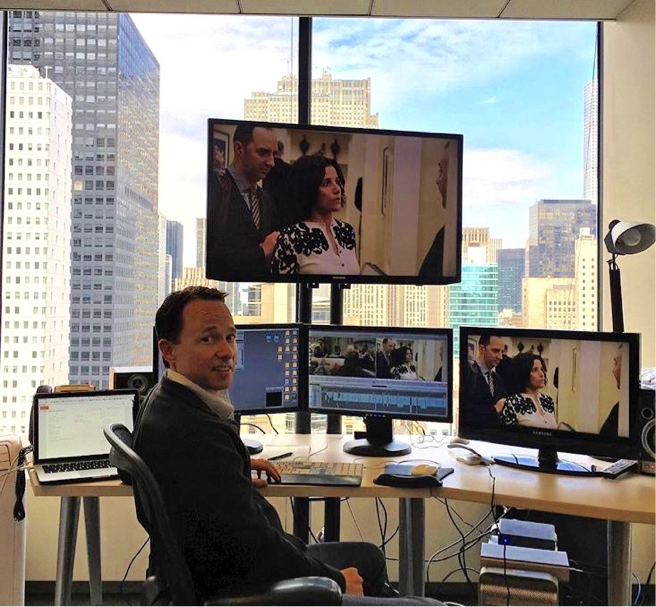
“I think human beings are ridiculous,” opines Nygard, who found film with his father’s 8mm camera, animating the adventures of his Charlie Brown and Linus dolls falling off the couch. “I realized the common thread in my work was about finding the humor in humanity, even in the documentaries and the action pictures I made.”
This swan-song seventh season of Veep, which concluded Sunday, May 12, sees Selina Meyer (Julia Louis-Dreyfus) running to regain her seat as President of the United States. The rapid-fire repartee would give Howard Hawks a run for his money while being blue enough to make Lenny Bruce blush. Typically, at least four but up to 10 cameras cover the action, giving Nygard and Barbato a lot to work with as they cut to maintain pace, humor and emotional story.
Nygard has been on the show since 2016, while Barbato joined for the current season. Both men bring these sensibilities and their experiences as directors in their own rights into the editing suite, which they feel has aided their holistic approach to the material as well as to creator and executive producer David Mandel’s needs immeasurably, as they explain to CineMontage.
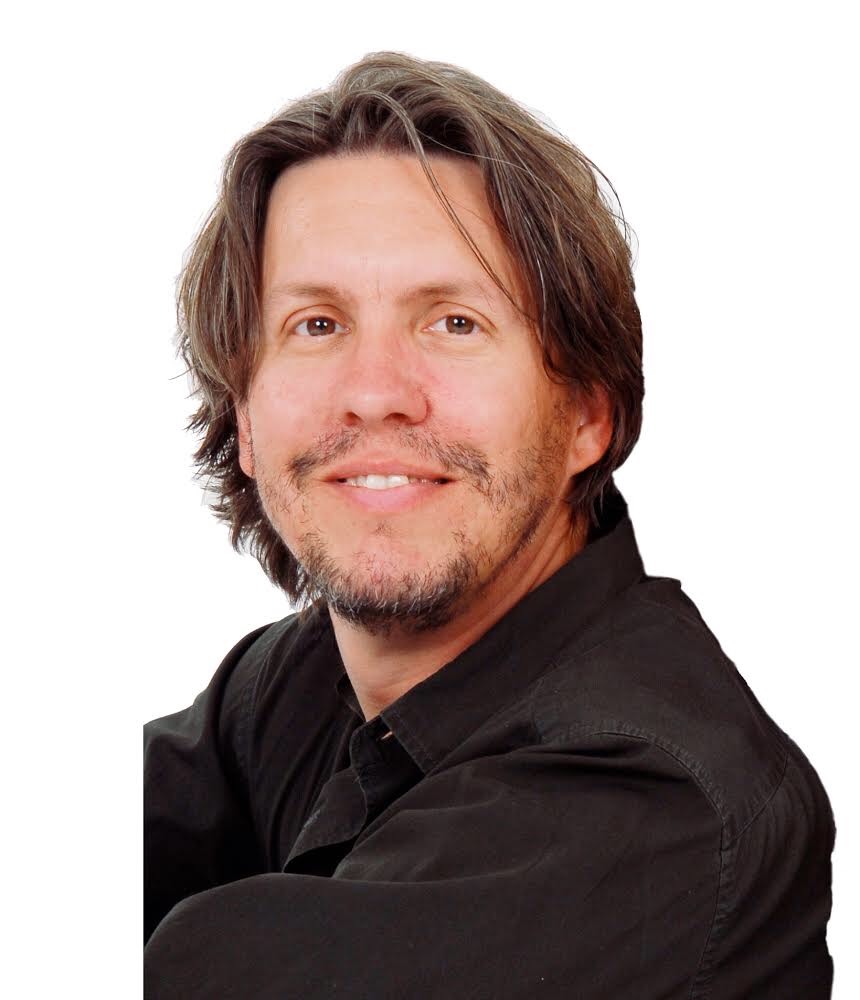
CineMontage: How thin is the line between drama and comedy?
Matthew Barbato: For me, there’s almost no line. As a viewer, and as someone who puts together narratives, I feel the closer you can get to the truth of something, the harder it is to swallow. But also the more hilarious it is.
Roger Nygard: I look for the funny aspect in every genre. Drama is one tool to make things funnier because the more serious and grounded the story is, the funnier it can be. I often remove a lot of jokes to keep things as dramatic as possible so when the remaining jokes do come, they’re that much funnier because you’re with the characters and believe what’s happening. You can lose that if the tone gets too broad
CM: What’s the best lesson in comedy you’ve learned from Veep?
MB: Dave Mandel’s priorities in the editing room. He doesn’t know it but I call him “the King of the Baby Killers.” He is absolutely ruthless when it comes to the material in the script. My jaw drops at the A-quality stuff he’ll cut to make a scene tighter. He wants to get from beginning to end without any diversion from the story’s pace and direction. I’ve worked with a lot of great comedy writers/producers, but working with Dave has been one of the most influential learning experiences I’ve had in the edit room.
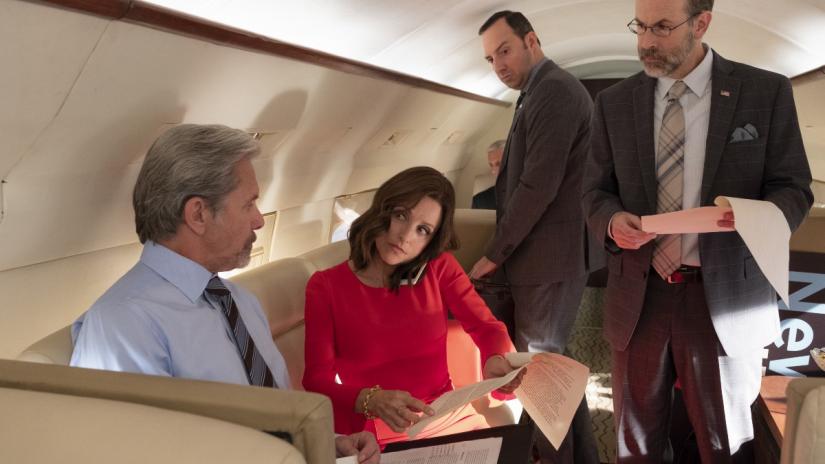
Courtesy of HBO.
RN: I had worked with Dave on Curb Your Enthusiasm (2000-present). The way I approach these shows is to increase the pacing as much as possible without affecting your ability to receive, perceive and enjoy the joke. We make it move as quickly as we do so that we can get a higher JPM [jokes per minute]. There was talk about it being too fast, but we decided people have to keep up with us. Editor Steve Rasch, with whom I worked on Season 5, once observed, “Nobody breathes on Veep.”
CM: Comedy can be trial and error. How do you approach the material that comes to you?
RN: The writers try a lot of alternate jokes so I usually start at the end, look where they wound up, then work backwards. It’s inconceivable how many jokes are cut out of an episode. At the wrap party, Dave said, “Is it funny? Honestly, I’m a damaged human being and that’s all I f*cking care about.” His sole focus is to make it funny, and then funnier yet, and part of that is to make the route from setup to punchline as direct as possible. As a result, we clear out most of the asides, tangents and word baggage — and there are a lot of joke casualties.
MB: I will add, however, that Dave has told me how important story is to him. He said, “I will sacrifice jokes over story so that we never lose the characters’ narrative thread.” I’d heard that on other shows before, but when push came to shove and we needed to hit the 21:30 mark, I would see producers sacrifice story to keep the joke. But Dave really doesn’t. To him, the jokes are like ornamental things that hang off the narrative. We want as many ornaments as possible, but we don’t want to lose the tree because the jokes are only as funny as they are because they’re in the context of a character’s situation.

Courtesy of HBO.
CM: There is a particular visual style to the show. Can you tell me about working within it?
MB: This season we had four cameras shooting every scene. It’s a lot.
RN: We went as high as 10 cameras on some scenes; when there was a debate, for instance.
MB: For me, it’s a balance of being in the right place for the joke while trying to keep the point of view. On Veep, we try to maintain a “you’re-standing-in-the-room” aesthetic, which is helped by using a lot of moving camera, as if the viewer is catching up with and finding the actio
RN: One thing the show is known for are the panning shots, which they call “swingles” — short for “swinging singles.” [Veep writer] Armando Iannucci originated that style and we work in as many swingles as possible to give it a dynamic flow. Something Dave pioneered in Season 6 that we discovered in the editing room was that he wanted to use more wide shots. Comedy is funnier in a wide shot because you can see more body language, while drama is in close-up for the faces.
In Season 5 we couldn’t use wides as much as we liked because those are filmed first, before they have arrived at the best performance and funniest jokes; the wides didn’t have the overall effectiveness that came in later takes. So in the next season, Dave started shooting coverage first, and then he would pull back and get the extreme wide shots as the last setup. It’s backwards from traditional drama, where they shoot the master first and then move in for coverage.
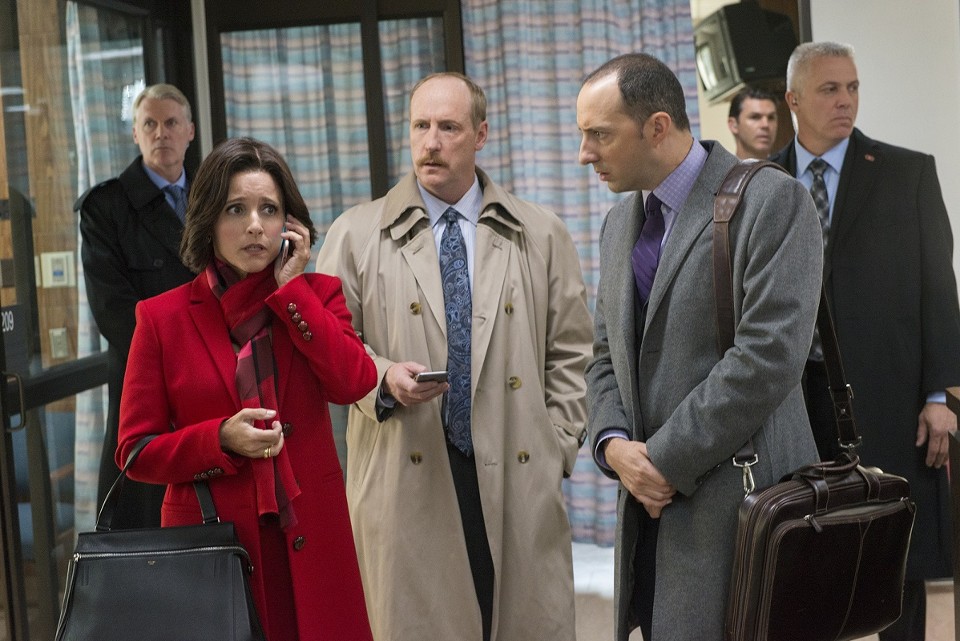
Courtesy of HBO.
CM: Is there a workflow on Veep that you find to be different or particular?
MB: On Veep, the editing process is so clearly a continuation of the script-writing process. Our scripts and first assemblies are much longer than a half hour, usually twice that. There’s a lot that needs to be taken out to get it down to time. And when Dave comes in, it almost feels like he’s picking up from the day they delivered the script to set, and he’s just trying to refine it but now with the benefit of the performances. Then he can get in there and use both hands, cleaning stuff up, changing lines around and building the scenes the way he wants.
RN: We will rewrite dialogue in the editing room and steal pieces of sentences so we can restart scenes differently; sometimes completely different from the way it was written. It’s the last rewrite of the script.
CM: You both have relatively unique credentials in that you have both directed, produced and had other roles in production. What do you bring with you from those experiences?
RN: Dave leaned on me the most heavily when we did the Season 5 episode, “Kissing Your Sister.” The whole episode was a fake documentary. The conceit was that Catherine had been filming her own documentary throughout the season, and now we finally get to see it. Dave directed that episode. He had never made a documentary and I had made several, so I spent a lot more time on set during that episode, giving Dave the benefit of my thoughts on what a documentarian might do. It’s one of the episodes I’m most proud of because it’s so different and took a lot of chances. If I had never made a documentary, what could I have shared? It wouldn’t have been quite as organic.
MB: There’s nothing specific my other experience has brought to my editing on Veep, but I do think my experience outside the edit room makes me a better editor overall. Filmmaking is a highly collaborative process and I think the more you understand the different roles involved, the more skills and perspectives you can bring to your role.
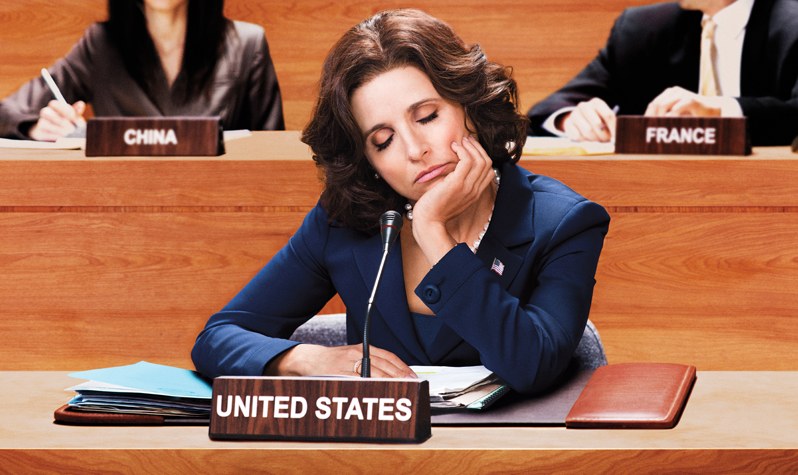
Courtesy of HBO.
CM: What am I missing that you think is core to this show?
MB: We haven’t talked about the level of performance from this cast. I’ve worked with some great, great actors before, but a cast like this, I keep saying to myself, “There’s just no weak link.” I mean, every scene that I do with every character is rich with good material. It can turn into, “I’ve got five different ways to do this, they’re all good and they all fit.” And that’s really the challenge — to make the best decision about which good one you’re going to choose.
RN: One of my favorite thoughts, as I’m building scenes, is that the audience has to watch what I think is funny. If you love the show, I get to choose what goes into your favorite show. Then of course, Dave Mandel comes in and blesses it. He may change things up, switch out some punch lines or cut it down, but it starts with my twisted, quirky, personal preferences. Luckily, I’m twisted in about the same way as our showrunner.



